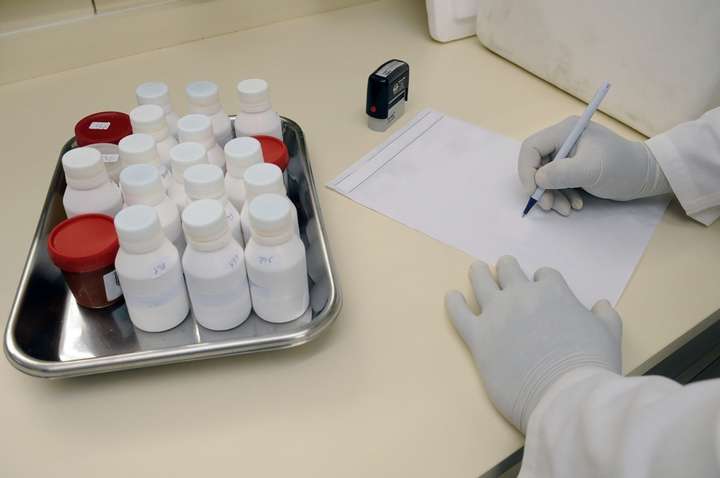ICP-OES is a destructive analytical technique that uses an inductively coupled plasma to excite the atoms of a sample. It allows the analysis of about 60 elements at once. This method is also environmentally friendly, utilizing renewable energy.

ICP-OES is a destructive analytical procedure
ICP-OES produces line spectra, which show the composition of the sample. These spectra can be magnified to reveal the peak characteristics. Click here for more information. The spectral “lines” can have spectral interferences, but software can help identify the peaks unaffected by interferences.
The most common element analyzed by ICP-OES is mercury. The method can be used to identify trace amounts of many elements, as well as major concentrations of several elements. The method requires liquefied samples and sometimes requires the digestion of solid samples. The sample is then vaporized with a plasma torch. The atoms in the sample are then analyzed by atomic emission, allowing researchers to determine the amount of each element present.
ICP-OES and ICP-MS are useful techniques for elemental determination in whole water digests. The former is more sensitive and is useful for samples with higher elemental concentrations. Despite these differences, the results obtained from both techniques are generally within one standard deviation of the most probable values.

It uses an inductively coupled plasma to excite the atoms in the sample
The ICP OES method is a powerful tool for elemental analysis. It involves using an inductively coupled plasma to excite atoms in the sample. This method is ideal for the analysis of volatile organic compounds (VOCs), which are some of the most challenging sample matrices for elemental analysis.
A state-of-the-art ICP OES instrument can handle these samples with exceptional sensitivity and long-term stability. Click the link: https://www.teledyneleemanlabs.com/products/icp-oes for more information. The better the instrument, the more reliable the results.
Another advantage of ICP OES is that it can analyze more elements at once. Its high-frequency plasma source provides a broad range of spectral frequencies and can measure the concentration of dozens of different elements at once. It also can analyze non-metals.
The ICP OES has two main modes of analysis. The axial view and the radial view. The axial view is more sensitive than the radial view. It can detect more elements than the radial view but is less robust to dissolved solids and complex matrices. Moreover, it reduces the torch’s life span.
Another important feature of ICP OES is the dual view facility. This system allows users to choose between the two modes, depending on their particular sample analysis needs.
ICP OES uses an argon plasma to excite the atoms in a sample. Plasma temperatures can reach up to 10,000 K. The energy in the plasma is powerful enough to excite atoms and determine their composition. For example, a study performed on Au/Pd/poly(ortho-toluidine) nanocomposites found a Pd content of 67 ppm g-1.
It allows for the simultaneous analysis of about 60 elements
The ICP-OES has been used in various applications, including analyzing trace elements in human brain tissue, screening for pesticides, and evaluating pharmaceutical compounds. The technique also has utility in routine drinking water and wine analysis. Its versatility has made it a popular choice throughout the research process.
One of the major advantages of ICP-OES is its high detection limit. It can identify even the smallest concentrations of metals without interfering with other elements. However, this can mean that ICP-OES requires expensive equipment and specialized technical staff. In addition, the process can require a large volume of sample material, which can limit the number of analyses possible. ICP-OES is a highly promising technology in biological research.
The ICP-OES instrument consists of two main parts: an inductively coupled plasma and the optical emission spectrometer. The ICP-OES instrument also includes a sampler, a pump, and a nebulizer. In addition to an ICP torch, the other components of an ICP-OES instrument are a monochromator, polychromator, and detector.
It is a renewable energy source
In ICP OES, the detection wavelength is measured in nanometers. The instrument has many components, including a peristaltic pump, which delivers measurement solution to the atomizer. An atomizer transforms the fluid into droplets sucked into a downstream spray chamber. The torch itself contains an injector to remove larger droplets.
Lastly, dispersing optics separates light into the varying wavelengths required for analysis. Ideally, ten replicates of the MN check ensure that the instrument is as accurate as possible.
ICP-OES is a process used in analysis laboratories to determine the number of elements in a sample. The energy for the process comes from the heat emitted by argon plasma. The temperature is around 10,000 K. The energy is used to excite atoms and ions in the sample. These excited atoms release specific wavelengths of light.





